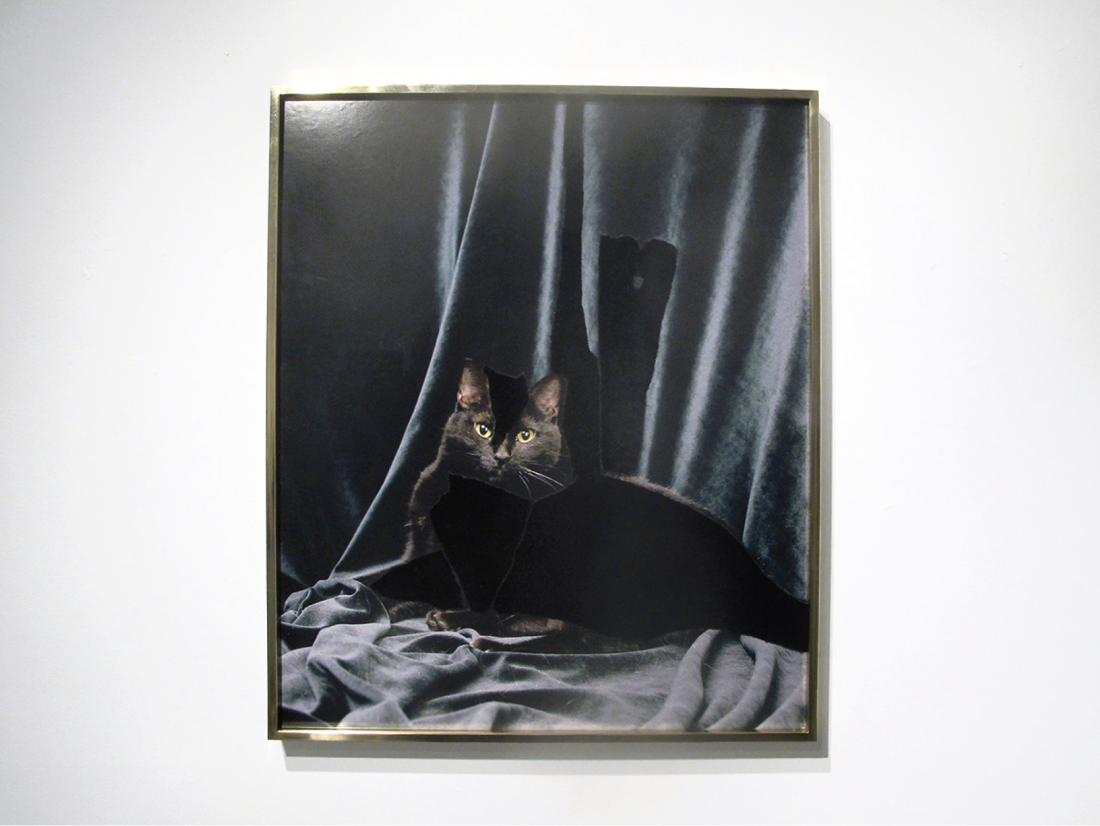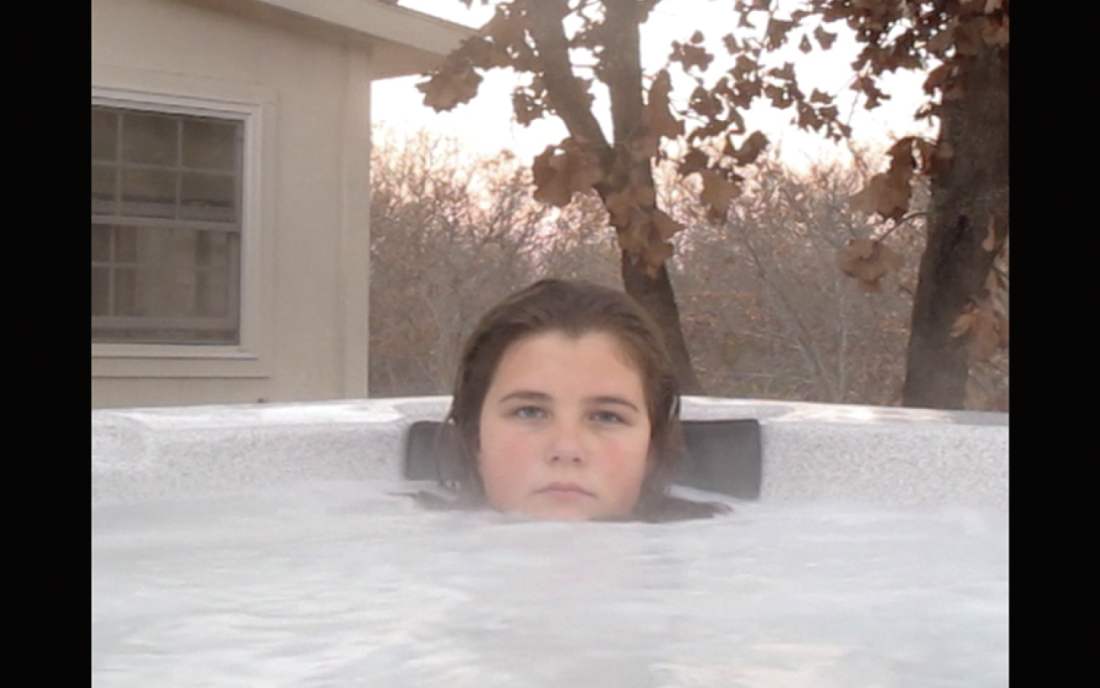Davida Nemeroff
Davida Nemeroff, an ex-pat who makes good south of the 49th parallel in her new home in Los Angeles, returned to her native land for two concurrent solo exhibitions in Toronto earlier this year. “California” at Gallery TPW and “I Got You Babe” at Katharine Mulherin Contemporary Art Projects offered selections of photographic and video works that embodied a veiled optimism and explored the potential of her discipline to surpass itself.
A quick survey of each exhibition revealed little continuity between her subjects. On the whole, they typified a quotidian beauty that implied Nemeroff wasn’t looking for anything in particular until she found it. When she did, the still images that resulted were lush yet poor, focused yet blasé and completely honest even when they divulged their artifice. In this sense, “California” was an apt title as her photographs formed an elusive romantic abstraction of Lotusland’s home state. “I Got You Babe” held a similar promise in its invocation of Sonny and Cher’s hopelessly sanguine paean to young love. Between these two exhibitions Nemeroff produced a range of works that were alluring in their precise framing and humanism. Take Watermelon, 2009, at Katharine Mulherin, for example, a contemporary vanitas of ripening fruit warming on a slate platform outdoors. The eponymous melon half was perfectly balanced in the crux of a pair of hedge clippers, but the entire arrangement of fruit seemed on the brink, as Nemeroff cunningly tipped the image sideways on the wall. Or Tulip, 2010, also at Katharine Mulherin, where a gauzy photograph of a bouquet of red-orange tulips on a dark ground seems almost painterly—reminiscent of a 17th-century Dutch still life. One of the blooms droops down inconsolably, its flaccid stem arcing gracefully from the bunch, conveying a sense of hubris if not a lack of virility.

Davida Nemeroff, Solid Gold Abi, 2010, digital C-print, black velvet, brass frame with museum glass, 20 x 24.” Courtesy Katharine Mulherin Contemporary Art Projects, Toronto.
In her artist statement, Nemeroff has written that her practice is part of an ongoing “investigation of the image through the apparatus,” of which the latter can be read as being both a component of photography and the sum of its parts. As with the above examples, Nemeroff readily demonstrates her adeptness with her camera—her images hold a seductive gloss not unlike commercial photography—but her work also suggests that the apparatus extends beyond her viewfinder to her presentation as well—considering their frames, their position on the wall, or even the substrate they are printed on—to recontextualize the act of seeing the image itself. Her subjects are naturalized, but these various apparatuses afford Nemeroff the control to examine other conceptual aims.
At the entrance to TPW, O Clock, 2010, depicted a grand sunset over a mountain range—the kind of thing both films and calendars are made for—but presented as a full-colour poster tacked to the wall with red pushpins. Landscape—or aspects of it—figured in other works at TPW, such as Silver Mask (Gabriel), 2010, an image of a gritty alluvial plain emptying into a glassy mountain reservoir. Like Watermelon, Nemeroff turned the photograph 90-degrees, so that with its anthropomorphized title, the image potentially reads as a face, but this positioning effectively flattened its perspectival depth. Or Cuddle Rocks, 2010, an inkjet print on adhesive vinyl of two rocks snuggling side by side. Amid a clutter of granite chunks, the entire image reads as an impenetrable visual field.
This “flatness” was a key aspect of Nemeroff’s work at TPW, an interpretation in part due to the banality of her subjects as well as to their compression of depth. But beyond Michael Snow’s description of the projected image as “thin,” or even Takashi Murakami’s conflation of pop commodities in his term “superflat,” the readymade-ness of her images leads tangentially to Duchamp’s “infra thin,” which Helen Molesworth has succinctly described “as a moment of intense liminality, an in-betweeness so ineluctable that it exists as a state in which its component parts are inseparable.” Duchamp himself could not define his neologism but, instead, only gave examples of it, such as “the warmth of a seat which has just been left,” which to me seems like a poetic reflection that would ring true with Nemeroff too.

Davida Nemeroff, Jacuzzi Time, 2011, video still, 3 minutes 48 seconds. Courtesy Gallery TPW, Toronto.
At TPW, Nemeroff presented her photographs in a theatricalized liminality: the prints hung in front of matching coloured grounds, basked in tinted light or existed as one-offs ready to be peeled from the wall (which is about as thin as you can get.)
At Katharine Mulherin, Solid Gold Abi, 2010, merged pictorial fields while being literally thickened by a soft material intervention. Here, a photograph of a black cat lounging on black velvet was partially obliterated by scraps of real velvet that roughly mapped out the contours of the cat’s body and the shadows in the backdrop’s folds. Yet underneath these collaged elements, Solid Gold Abi expressed flatness by appearing as if it were a photograph of another—a sense of remove not unlike Richard Prince’s Marlboro Man photographs—and, strangely, with strands of hair cluttering the foreground of the image. This latter detail, or even the artist’s shadow appearing in the frame in Sun Dog (jake), 2010, at TPW, seem to be deliberate, either as aberrant interruptions or merely making the photographer’s presence known.
Nemeroff’s presence was more palpable in her videos, which appeared in both exhibitions, though none seemed to encapsulate the artist’s aims more than any other. In a small viewing room at TPW (replete with folding patio chairs), Jacuzzi Time, 2011, depicted a prepubescent girl floating in an outdoor hot tub. This work draws an uncanny relationship to Rineke Dijkstra’s portraits of young swimmers and clubbing teenagers, but Nemeroff’s depiction seemed warmer and more genuine, a feel that is affirmed when her voice is heard off screen inviting her subject to look at the camera if she wants. The handheld camera is fixated on the girl’s face bobbing above the froth and catches her unscripted “performance” as she stares back, shifting between states of ease, boredom and discomfort. For the presentation at TPW, the video was looped five times but with a sixth, different clip appearing like an Easter egg at the end of the sequence. Nemeroff’s videos affirm that in the way that her photographs convey an objective distance in their flatness, the videos are generous too—a quality that manifests for those patient enough to see it. ❚
“California” was exhibited at Gallery TPW in Toronto from February 5 to March 5, 2011. “I Got You Babe” was exhibited at Katharine Mulherin Contemporary Art Projects in Toronto from February 10 to March 6, 2011.
Jen Hutton is an artist and writer currently based in Los Angeles.

